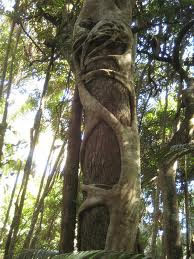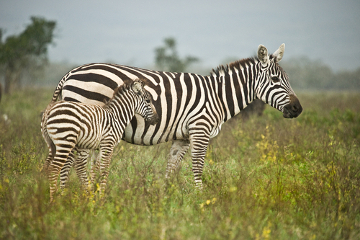At roots are structures, usually underground, that fix the vegetable in the ground and also absorb water and mineral salts. At the tip of the roots we find a cell-rich structure, called the coif. The cap cells have the function of protecting that part of the root. In addition, they produce a gelatinous substance that lubricates the hood, facilitating root penetration into the ground.
In nature we can find several types of roots. Let's meet them?
§Pivoting root.
Also called taproot, this type of root is characterized by having a taproot, from which small roots that also branch off and are called lateral roots or secondary roots. We can find this type of root in plants like the coffee, beans, orange, avocado, ipe, etc.

In the image we can see the main root and its branches
§Root fasciculate.
Set of fine roots starting from a single point, all having the same diameter. This type of root can also be called a roots in hair. It can be found in plants like the corn, grass, chives, cane, among others.

In the image we can see that the roots all come from a single region
§Roots anchors.
They are also called roots support. This type of root if develops from some regions of the stem. The main function of this type of root is to increase the support of the plant.

We can find this type of root in mangrove plants
§ Respiratory Roots
Also known as pneumatophores, this type of root is found in marshy places, whose soils are oxygen-poor. These roots grow very close to the surface and are able to absorb oxygen present in the atmosphere. It is common to find this type of root in mangroves.

Respiratory roots can be found in mangrove regions
§Aerial roots.
These roots develop into some kind of support. They can be found at epiphytic plants (which live on other vegetables), such as orchids. It is important to remember that this type of root is not parasitic and does not cause any damage to the support plant.

The aerial roots do no harm to the plant they use as support.
§Strangling roots.
Some plants develop their roots from stem branches. When they reach the ground, they begin to develop and give rise to structures that are very similar to trunks and that can even replace the stem supporting the plant. Sometimes these roots end up hugging the trunk of the tree that supported it, killing it by strangulation (that's why it takes its name).

This type of root kills the plant it uses as support
By Paula Louredo
Graduated in Biology



